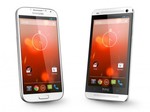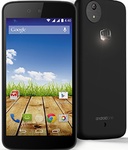Redmi Note 9 Review - Android
The Xiaomi Redmi Note series has always been very popular to people looking for an affordable but feature-packed smartphone. And with the Redmi Note 9 series, Xiaomi attempts to keep the title, despite the growing competition from other brands. Both the Redmi Note 9 and Note 9 Pro — just by looking at their specs […] More
This article, Redmi Note 9 Review, was originally published at NoypiGeeks | Philippines Technology News, Reviews and How to's.
The Xiaomi Redmi Note series has always been very popular to people looking for an affordable but feature-packed smartphone. And with the Redmi Note 9 series, Xiaomi attempts to keep the title, despite the growing competition from other brands.
Both the Redmi Note 9 and Note 9 Pro — just by looking at their specs — already look very interesting, especially when you consider the price.
But today, in our Redmi Note 9 review, we’ll be focusing on the cheaper model to see if it’s indeed worth your time and money. Let’s begin.
Redmi Note 9 Specs
- Android 10, MIUI 11
- Dual SIM, Dual Standby
- 6.53-inch FHD+ IPS display, 2340 x 1080 pixel resolution, ~394ppi
- Corning Gorilla Glass 5
- 2.0GHz MediaTek Helio G85 octa-core processor
- 2GB/4GB RAM
- Mali G52 MC2 GPU
- 64GB/128GB internal storage, expandable via microSD
- 13-megapixel front camera, f/2.2
- 48-megapixel (f/1.8) + 8-megapixel (ultra-wide, f/2.2) + 2-megapixel (macro) + 2-megapixel (depth sensor) rear cameras, PDAF, LED flash
- 1080p@30fps, 720p@120fps slow-mo
- Rear-mounted fingerprint scanner
- Splash-proof nano-coating
- HSPA+, 4G LTE
- WiFi 802.11 a/b/g/n/ac, dual-band
- Bluetooth 5.0
- GPS, A-GPS, GLONASS, Galileo, BDS
- IR blaster
- USB Type-C
- Dimensions: 162.3 x 77.2 x 8.9mm
- Weight: 199g
- Colors: Polar White, Midnight Grey, Forest Green
- 5,020mAh non-removable battery, 22.5W fast charging, Reverse charging
Design and Build Quality
Just by the design, the Redmi Note 9 is already a major upgrade over the Redmi Note 8. The quad-camera setup on the back has a distinctive 2×2 orientation, with the fingerprint scanner below it. The two lenses on the top have a white highlight since they’re basically the main stars here.

The back panel uses a glass-like plastic. It lacks the durability and weight of an actual glass, but do inherit its premium appeal. Although, it’s really prone to fingerprint marks.
What we have here is the Midnight Grey color option. But as you can see, it has a more bluish tone. If it doesn’t fit your taste, you can get the Polar White or Forest Green.

It may be made of plastic, but the Redmi Note 9 isn’t prone to hairline scratches and still feels really solid and sturdy. No weird flexing or anything. For extra peace of mind, you can strap in the free case in the box.
To make up for its plastic build, the Redmi Note 9 has a splashproof coating and a sturdy Corning Gorilla Glass 5 that’s protecting its 6.54-inch FHD+ screen. It should be enough to withstand minor scratches. Xiaomi pre-applied a screen protector so you don’t have to.

You can barely tell its a below-Php10k smartphone with its punch-hole on the top left or “DotDisplay” as what Xiaomi calls it. A design accent that’s starting to become a statement in Android phones. It helps eliminate any notches and made the bezels ultra-thin. Thus, creating an impressive screen-to-body ratio.
With its large 6.53-inch screen and 5,020mAh battery, the Redmi Note 9 is a large phone. It has a thickness of 8.9mm and a weight of 199g. For a comparison, smartphones averages at around 7mm and 170g, respectively. Still, we find this acceptable as it doesn’t skimp on features to look good.

Taking a tour, we have the noise-cancelling microphone and IR blaster on the top. While on the bottom we have the USB Type-C port, headphone jack, primary microphone, and the single loudspeaker.

On the left side, we only have the SIM tray, which can house two nano SIM cards and a microSD card. While on the right we have the lock/power switch and volume controls. The physical buttons are tactile and feels durable enough.

Overall, we’re really liking the design on the Redmi Note 9. It may be a bit bulky, but still gorgeous enough without skimping on features.
Display and Sound Quality
The Redmi Note 9 has a 6.54-inch FHD+ IPS screen display, with a 2340 x 1080 pixel resolution, ~394ppi, TUV Rheinland low blue light certification, and up to 450-nit brightness.

It doesn’t use a vibrant OLED screen nor has a smooth 90Hz refresh rate. But for the price, it’s already acceptable.
The large size provides enough space for multitasking and on-screen controls in games. Both the colors and contrast are fine, and the display is bright enough to be used outdoors.

In the Redmi Note 9’s webpage, it says that it has a 1216 X max 0.5mm high amplitude ultra-linear speaker. Whatever that is, what we know is this loudspeaker is really loud, although the clarity is not the best.

For better listening experience, you can plug in a pair of earphones in the headphone jack. But you have to purchase it separately since no earphones is included in the box to keep the price down.
Hardware and Performance
The Redmi Note 9 is one of the first phones to use the new 2.0GHz MediaTek Helio G85 octa-core processor — a gaming chipset for entry-level devices. It comes with a Mali G52 MC2 GPU, and is available in 3GB/64GB and the one we have here, the 4GB/128GB model.

For an entry-level smartphone, the Redmi Note 9 sure feels fast and smooth. All your basic tasks, flicking through Facebook and Instagram, taking pictures, texting, chatting, calling, pretty much everything is really seamless on this thing.
Redmi Note 9 Benchmark scores

Gamers on a budget would really like the Redmi Note 9. There’s a feature called Game Turbo. Although, it’s buried in the settings where you have to manually add games and run it from there to improve its performance.

Out of the box, Call of Duty, NBA 2K20, and Asphalt 9 ran smoothly at low to medium graphics setting. But when we ran it with Game Turbo, we noticed minor improvements. We were able to play NBA 2K20 at high graphics with less visible lags and stutters.
Mobile Legends fans out there would be glad to know that it’s playable on the Redmi Note 9 with High Frame Rate (HFR) mode turned on. The game ran seamlessly without any noticeable lags or stutters.

Software and User Interface
Just like its other recent releases, the Redmi Note 9 runs on the latest Android 10-based MIUI 11 interface. Xiaomi’s UI is easily one of the cleanest and straightforward interfaces in Android space.

The Redmi Note 9 lockscreen looks clean. The app drawer is disabled out of the box, so all your apps are laid out on the home screen. Swiping from the far left reveals a special tab with the Google Search, weather, and relevant news from Google.
Vivo V19, V19 Neo launch in the Philippines
13/06/2020 10:48 AM
WATCH - Redmi Note 9 Full Review
13/06/2020 07:20 AM
eGG Network to air first Southeast Asia linear telecast of NBA 2K League
13/06/2020 06:06 AM
Smart Bro LTE Pocket WiFi available at GrabMart
13/06/2020 08:06 AM
Realme 6 vs Vivo V19 Neo specs comparison
13/06/2020 07:57 AM
Lalamove and QC local government launch LalaJeep
13/06/2020 07:27 AM
Kia K2500 Karga - your ideal people mover
13/06/2020 07:18 AM
30,000 mAh Mi Power Bank 3 now official
13/06/2020 12:56 PM
- HEALTH
- Comics
- Libraries & Demo
- Sports Games
- Racing
- Photography
- Transportation
- Media & Video
- Sports
- Health & Fitness
- Weather
- Medical
- Cards & Casino
- Arcade & Action
- Personalization
- Social
- Communication
- Productivity
- Casual
- Shopping
- Tools
- Brain & Puzzle
- Business
- News & Magazines
- Finance
- Lifestyle
- Music & Audio
- Entertainment
- Travel & Local
- Books & Reference
- Education
2014 © Filipino apps and news








